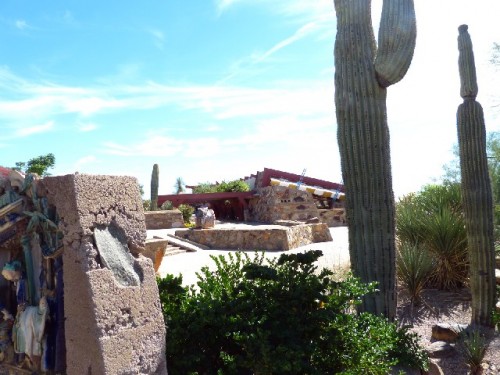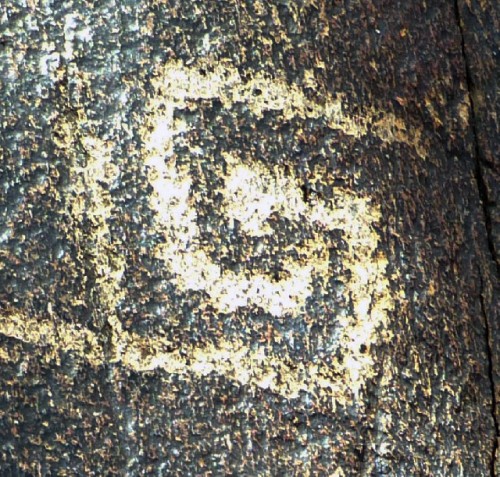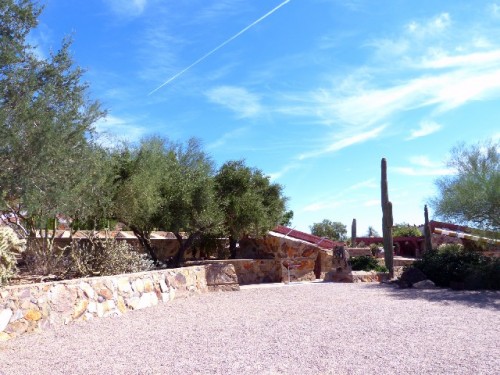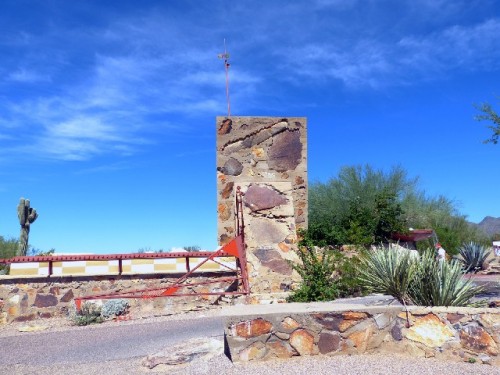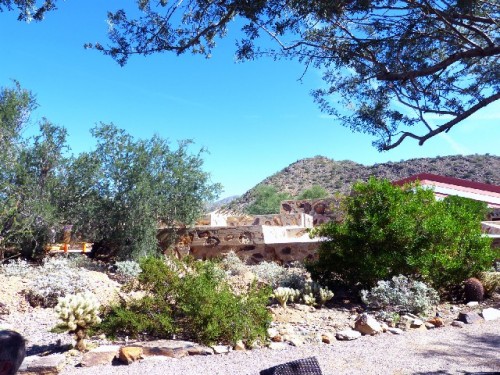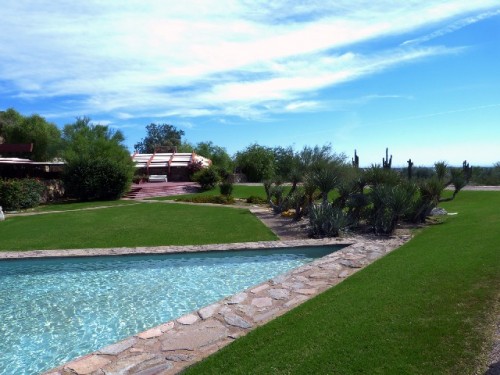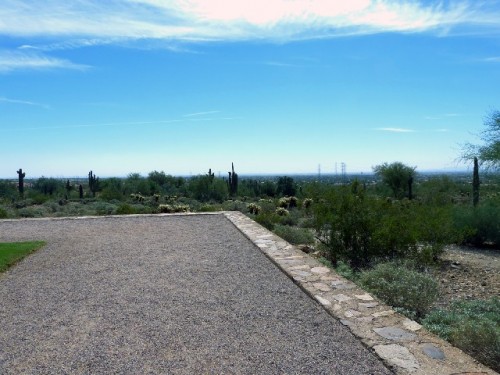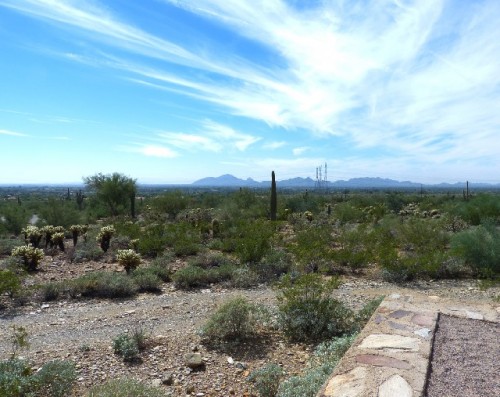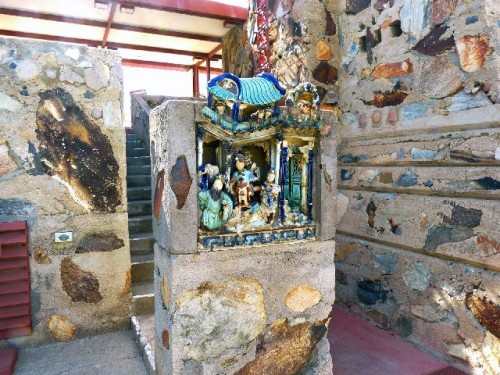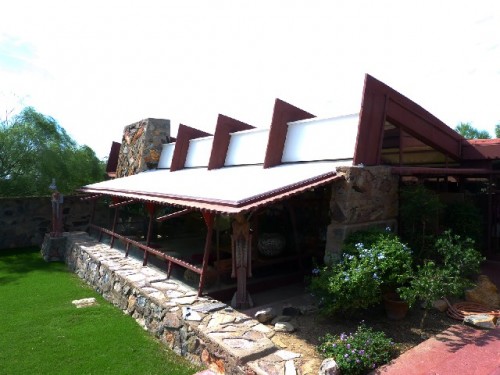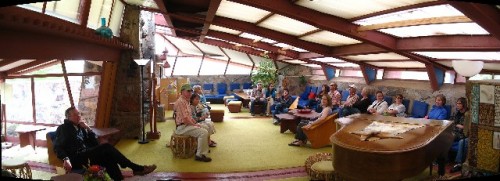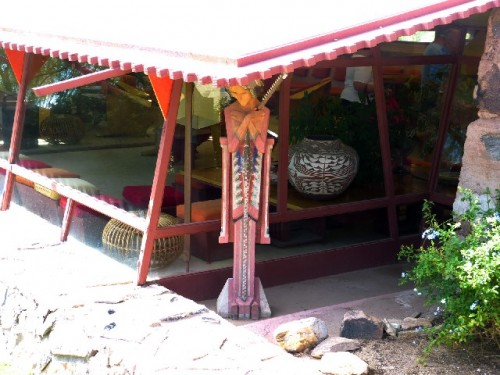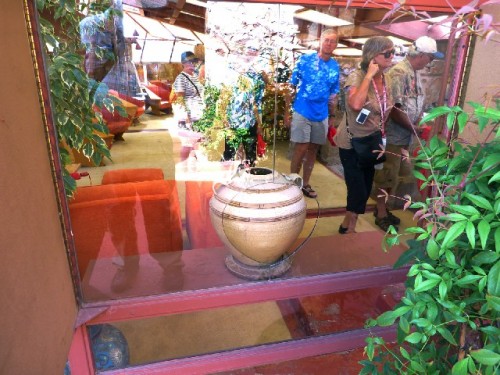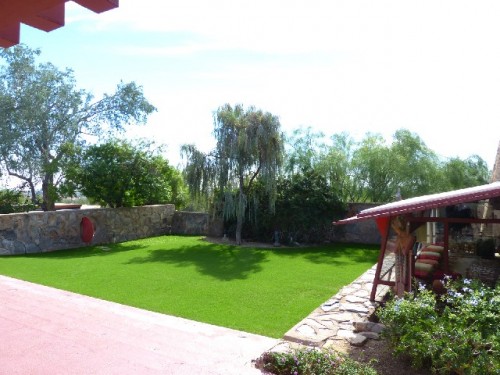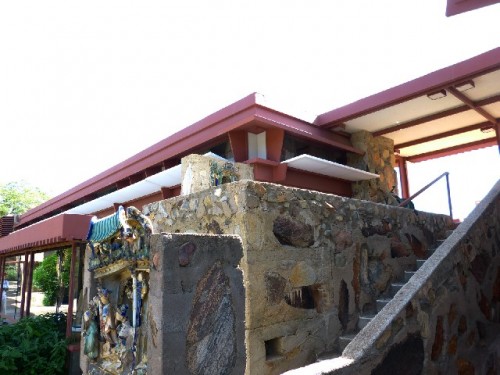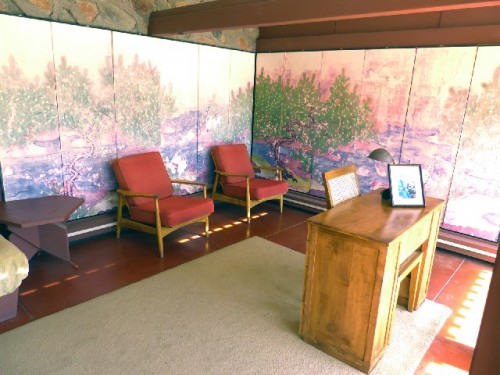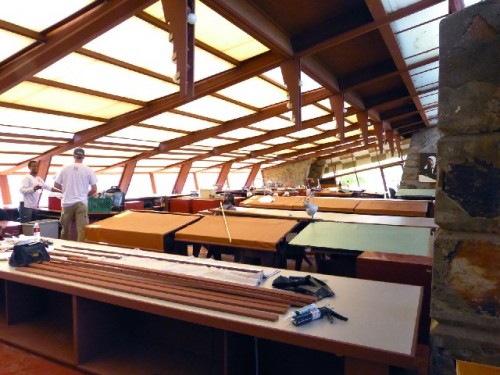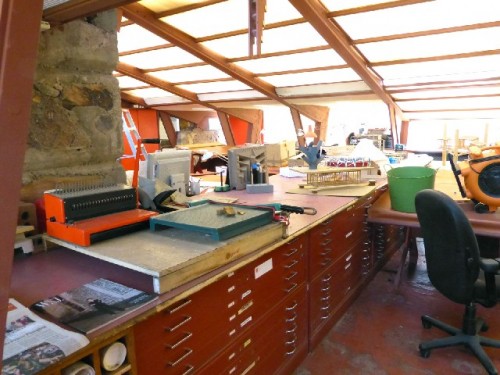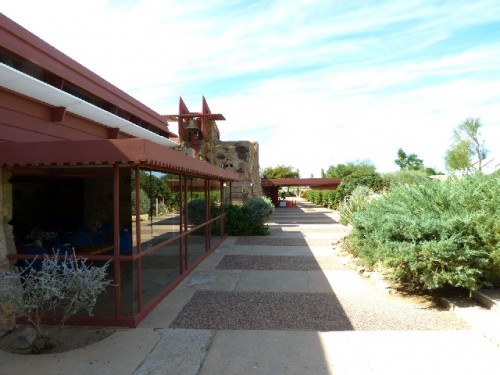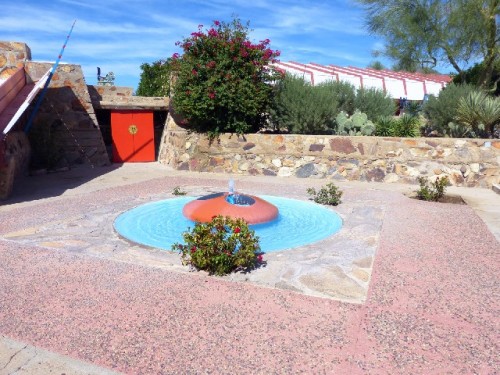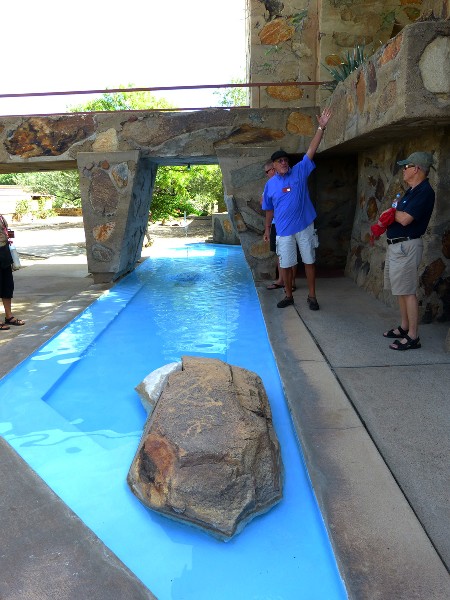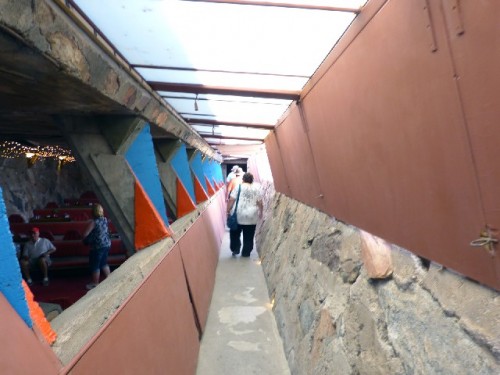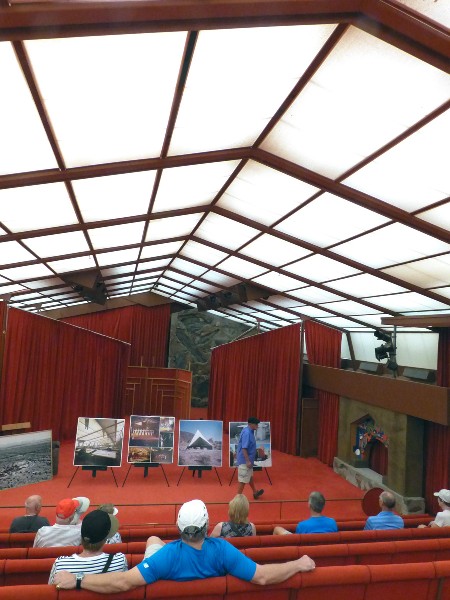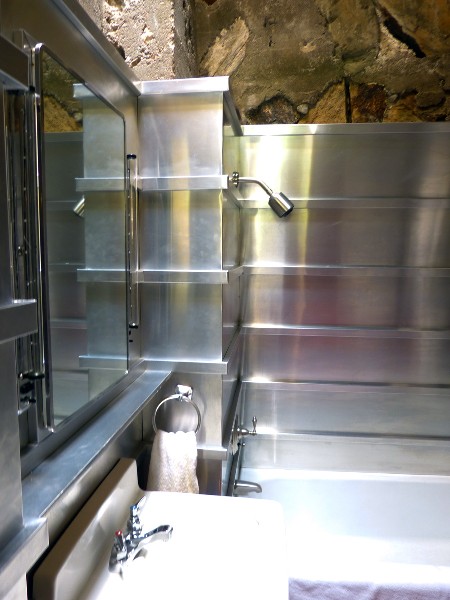Taliesin West
Frank Lloyd Wright in Arizona
By: Charles Giuliano - Nov 03, 2014
Initially, Frank Lloyd Wright (June 8, 1867 – April 9, 1959) worked in Arizona in 1928 as a consultant to Arthur Chase McArthur to build the elaborate Biltmore Hotel in Phoenix. At that time he was commissioned by Dr. Alexander Chandler to develop a resort San Marcos-in-the-Desert.
There had been little work since 1924. In addition to professional issues there were personal difficulties which were settled by 1929. He was anxious to process with projects for Dr. Alexander but the Depression intervened. There were downscaled designs that never came to fruition.
With America mostly unemployed there was no demand for architecture. By then Wright had a substantial reputation and found a means of frugal support with a core of some 25 students at Taliesin in Wisconsin.
There was a family to support with six children by his first wife Catherine. There had been an extended affair with Mamah Borthwick Cheney the wife of Edwin Cheney for whom he designed a home in 1903. She and her two children were murdered in the August 15, 1914 rampage by Julian Carlton a servant from Barbados. He torched Taliesin (Wisconsin) and killed a total of seven with an ax before attempting to take his own life.
Following a divorce from Kitty in 1922 the following year he married Maude "Miriam" Noel. The union ended after only a year because of her addiction to morphine. While separated from Noel he met Olga (Olgivanna) Lazovich Hinzenburg at a Petrograd Ballet performance in Chicago. They moved in together at Taliesin in 1925, and soon Olgivanna was pregnant with their daughter, Iovanna, born on December 2, 1925.
Some thirty years younger than Wright she brought stability to his personal life and was a plucky partner for the eventual development of Taliesin West. Because of his fears about hospitals she nursed him through a bout of pneumonia. The physician advised that getting away during the harsh winter months would prolong his life.
In a sense Wright and his entourage of students and associates became first generation Arizona snowbirds.
One of these fellows persuaded his parents to commission Wright to build their home. As was typical of his practice the clients got more than anticipated. It resulted in one of America’s foremost architectural landmarks. From 1934 to 1937 he designed and developed Fallingwater for Mr. and Mrs. Edgar J. Kaufmann Sr., at Mill Run Pennsylvania, near Pittsburgh. The patron envisioned a home next to a rural waterfall but Wright sited it spectacularly above the falls.
The elaborate home was constructed for $155,000 which was a handsome sum during the Depression. The design fee was $8,000. It provided seed money for Taliesin West.
Wright and the Taliesin Fellowship began to "trek" to Arizona each winter in 1933. Initially they stayed in temporary space in Phoenix. In 1937 Wright purchased the plot of desert land that would soon become Taliesin West. He paid $3.50 an acre on a southern slope of the McDowell Range overlooking Paradise Valley outside Scottsdale.
Wright commented “Finally I learned of a site twenty-six miles from Phoenix, across the desert of the vast Paradise Valley. On up to a great mesa in the mountains. On the mesa just below McDowell Peak we stopped, turned, and looked around. The top of the world.”
Taliesin in Welsh mythology was a poet, magician, and priest. The family motto was Y Gwir yn Erbyn y Byd which means "The Truth Against the World"; it was created by Iolo Morgannwg who also had a son called Taliesin, and the motto is still used today as the cry of the druids and chief bard of the Eisteddfod in Wales.
Today roads connect to what was once remote desert. What attracted Wright were spectacular views, the abstract arid landscape, and an absence of encroaching neighbors.
The first order of business was constructing an access road to the elevation. Olgivanna was tasked to drive her husband to the site. It was in a rough state and she expressed concerns about washed out, boulder strewn ravines. He was reportedly annoyed with her hesitance.
In the years of development using on the job labor of unskilled fellows her objections and demands had subtle influences on the eventual shaping of the remarkable structures.
Because he was his own client Wright freely experimented. Following his concepts of organic design most of the materials were found on site. In ancient times the area was occupied by indigenous peoples of which little is known. There were pictographs incised on stone. One on of these, now sited near the entrance of the complex, was a glyph which Wright used to create a logo.
During the early years of the annual winter trek from Wisconsin to Arizona the entourage camped out. This is still a part of the heritage. Architecture fellows were assigned to design and build their own simple dwellings. Because of financial challenges the program has been cut back to a two year Master’s degree. There is still the option to live in a tent.
Using rock and stone from the site Wright designed low, ground hugging, rubble walls. The sand was dug and combined with concrete. At first water was hauled for free from a neighboring ranch for construction, cleaning and cooking.
A friendly rancher used a dowsing rod to identify a location to drill for water. The project cost some $10,000 and the company advised Wright to quit as it was getting too deep with no result. Wright persisted and an aquifer, which still is in use, was struck at some 480 feet.
In the desert landscape nothing is more precious and spectacular than water. As a keynote of his design, shaped like the prow of a ship pointing to the horizon, he created a shallow pool. As the complex took shape with office space, a vast drafting room, dining and common area, private quarters and guest apartments for visiting celebrities and clients, everything was oriented to that magnificent vista.
Wright bought boxes of smashed Chinese ceramic relief. They were restored and used to signify seperate areas and functions of the overall design. A collection of Japanese art, estimated at worth $250,000 to $500,000, was destroyed in a fire. There are still remnants of the collection in the living areas of Taliesin West.
Returning for the winter season just after the war Wright was furious that the government had taken the edge of his property by eminent domain to run disruptive power lines. He called his friend in the Oval Office, Harry Truman, to no avail.
He was all for abandoning the site and moving to the Tuscon area. Now in his 80s Olgivanna prevailed that it was a bit late to start over. Upon his death at 91 in 1956 he tasked her with sustaining and completing his projects.
She was instrumental in insisting that he abandon the prolonged experiment of using canvas to cover windows. The material had to be taken down and stored off season. Because of this he made annual design modifications.
While temperate during the day the desert hovers at freezing at night in the winter. There are long stretches of inclement weather. Eventually she insisted on glass and some basic heat.
Reluctantly he agreed but when glass was installed he refused to move a prized ancient pot. As a symbol of his renowned mendacity the glazer had to cut a circle around the now protruding vessel.
The complex has many charming signifiers of his invention, chutzpah, and stubbornness. He routinely included elements of design that clients didn’t ask for. In his music room he provided a niche to place the piano when not in use. Used in a residential design the client complained that he didn’t own a piano. Get one, was the advice from Wright.
At Taliesin West he literally turned his back on those damned power lines. The entrances that formerly led out to a terrace around the pool were blocked off. The entire complex was reoriented to the rear and less spectacular view. One distant mountain top, after Wright’s death, was marred by the erection of now dysfunctional communications towers. Approaching Taliesin we encountered dense surrounding development.
The barren land which he treasured is no longer remote. The ever expanding community of Phoenix is slowly filling in those former wide open spaces.
Perhaps it is an analogy for Wright, his genius, and the disappointments of a career.
During his time in the desert he created some fifty designs for Arizona. Of these 20 were built. This is roughly in line with an average of about 50% of his designs which were actually constructed.
The early drawings and models were lost in the 1914 fire as well as a later one at Taliesin Wisconsin. His designs formerly archived at Taliesin West have been acquired by the Avery Library at Columbia University. Because of building code and technical changes his plans are no longer available for construction. But Wright inspired design continues particularly through the many fellows who came through the program over the years.
In our two hour tour of the site we came to know and appreciate many of his concepts. Of particular relevance was his idea of building into nature, unobtrusively, using local materials. There is a harmony and synergy between the complex and its natural surroundings.
We were struck by the sense of community. The private areas were surprisingly modest. We did not, however, see the apartment and swimming pool created for his wife. But Wright’s live/ work space was simple and efficient. He did not live all that more elaborately than those who worked for and studied with him.
It was surprising to learn that a music/ performance area had been dug then blasted out of rock. The docent demonstrated the remarkable acoustics that reflected his early years with Dankmar Adler the engineer and partner of Louis Sullivan. One of his last additions to the complex was a theatre for lectures, films and plays. The seating allowed for dinner/ theatre with site lines oriented to his diagonal manner of sitting.
During an era before television and far from town Wright craved entertainment. He loved to screen movies, particularly Westerns. John Wayne was a friend. Often he enjoyed seeing what we would call at best mediocre films multiple times.
Considering that Wright was in his 70s when he started Taliesin West it proved to be a productive period of his life. Until his death he was fully engaged with projects. Often he worked well into the night and there was a sleeping area for naps between bouts of drawing and drafting.
Because of his penchant for experiments with materials and design many of his structures now require repair and restoration while a number have been razed. A Usonian design, the Bachman Wilson house, has been transferred from New Jersey to Crystal Bridges.
While treasures of American architecture there is an ongoing challenge to fund and maintain his legacy; an ongoing struggle for the Frank Lloyd Wright Foundation.
As our day in the desert demonstrated there is so much to enjoy and learn from a genius who turned down an opportunity to live and study in Europe. He remained home to help develop a great tradition of progressive American architecture.

